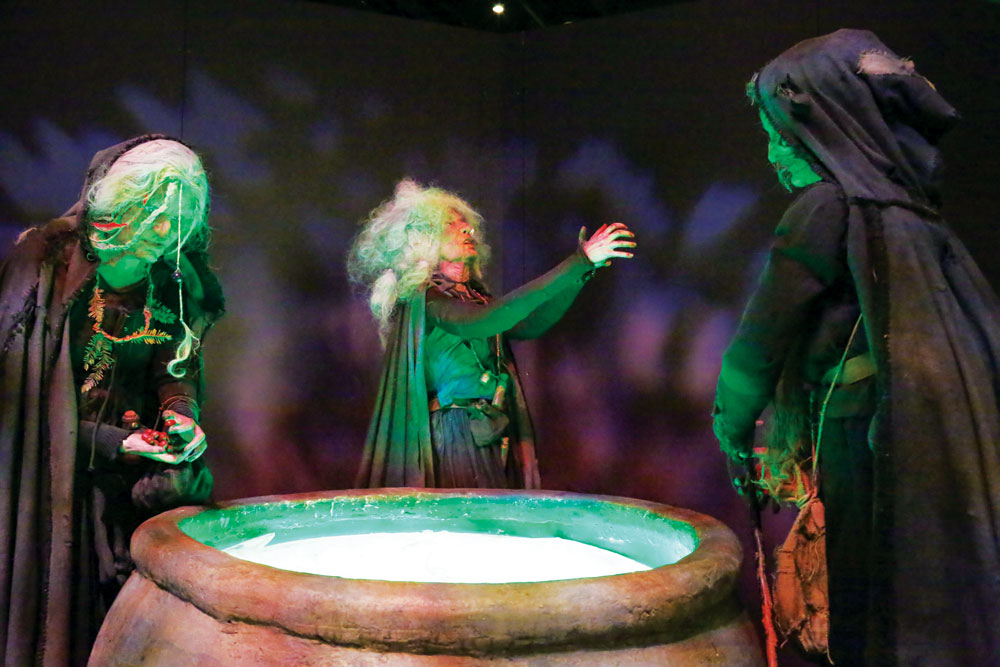
Hundreds of years ago, potions were made to heal and others to kill. Whether poisonous or medicinal, witches were executed for using them.
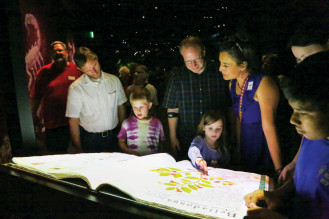
Turning pages in an enchanted book “magically” reveals the tales behind poisons.
Hear “Double, double, toil and trouble; Fire burn, and cauldron bubble,” from Shakespeare’s Macbeth and the images of three frightful witches materialize in one’s mind. Shakespeare was playing on the public’s fears that anything brewing at the hands of those mystical ladies had to be bad. With potions used both to heal and to kill, people figured magic was at work, raising fears of witchcraft. Visitors will find this and many other tidbits of information accompanying the visually appealing displays in “The Power of Poison” exhibit at the Denver Museum of Nature & Science.
Upon entering the dimly-lit exhibit, which runs through January 10, it’s clear visitors are in for a mysterious time. But make no mistake, “The Power of Poison” isn’t about frightening people (much). It’s about informing in an entertaining way to discover both the beneficial and harmful sides of poison, the many places it can be found, and the many ways it has been used throughout time.
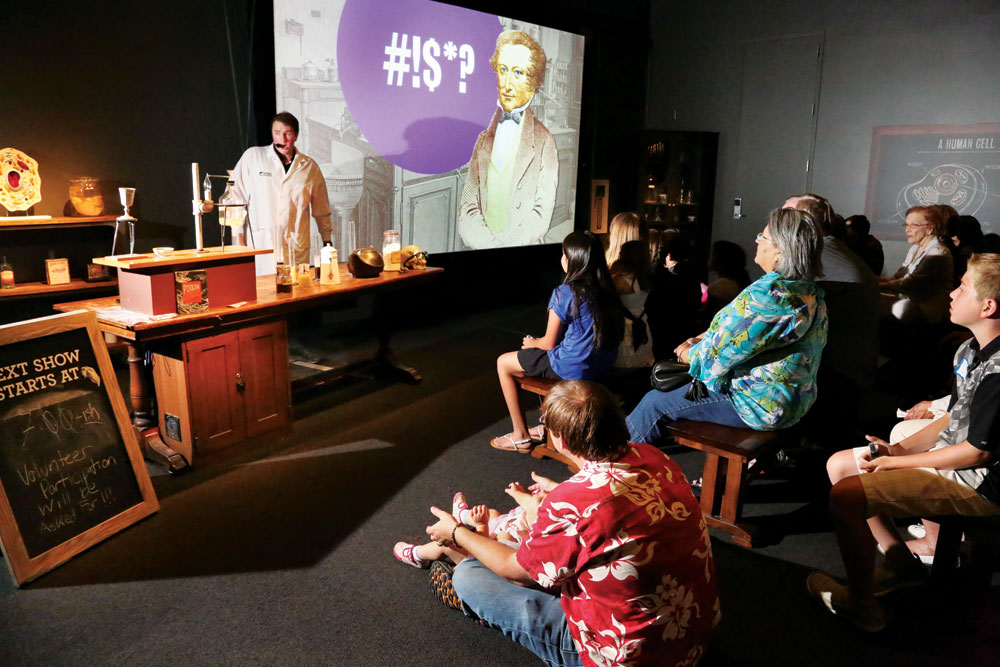
A live theater setting called Detecting Poison examines the beginnings of forensics and toxicology. A real-world case from the 19th century is re-enacted with humor and intrigue.
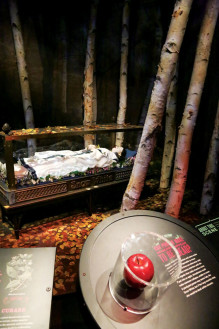
Some poisons that kill in large doses merely cause unconsciousness in smaller doses, like Snow White’s anesthesia. In the past, doctors removed the pain of surgery by using small doses of otherwise deadly poisons.
The first section of the exhibit, a re-creation of the remote Chocó forest, shows Poison in Nature with live, and deceptively cute, Poison Dart Frogs. There’s a Wandering Spider, magnified three times for extra freak-out factor, plants that make poisons to fend off attackers, venomous snakes, and even creatures that borrow poisons. The Great-Tailed Grackle, for instance, squishes poisonous ants against its feathers, creating a protective coating for itself and providing a nice snack of now poison-free insects.
The next area, Poison in Myth & Legend, examines a time when magic overruled science to explain unusual behaviors. Poisonous plants and other kinds of toxins were the foundations of these tales. The exhibit explains just how much of the stories might have been true. This is where you’ll see a life-sized model of Macbeth’s three witches and their famous cauldron. Fans of fairy tales will enjoy dioramas of “Alice in Wonderland” (what type of poison lead to the Mad Hatter’s name?) and “Snow White” (what was on that apple that made her only appear dead?)
Special effects play a part in this section of the exhibit: Animated stories of the ancient myths of Hercules and Medea are projected onto ceramic pots; and a giant enchanted book has real pages to turn, “magically” revealing images and wording about myths and poisons.
Get into the act by volunteering as a participant in a live theater setting where Detecting Poison examines the beginnings of forensics and toxicology. Using humor and intrigue, the story of a real-world case from the 19th century is re-enacted.
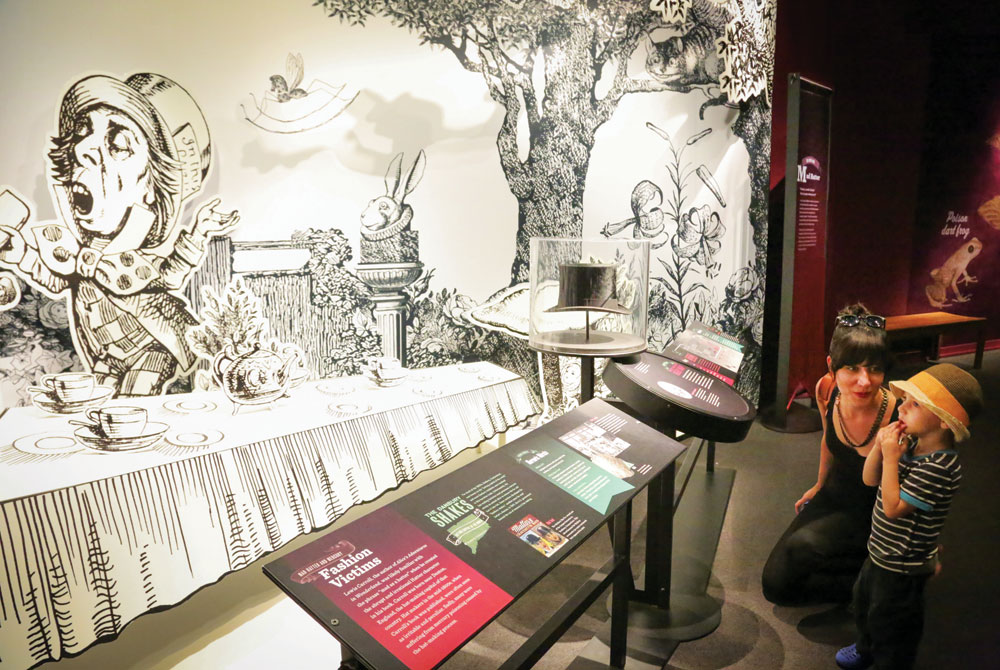
Lewis Carroll, the author of Alice’s Adventures in Wonderland, grew up in Denton, England, the hat-making capital of the country. Hat makers were often irritable and peculiar due to mercury poisoning caused by the hat-making process. Hence, the book’s character the Mad Hatter.
Poison by Accident shows some of the ways people and animals can get very sick and even die due to unintentional poisonings. Use iPads to figure out, for instance, which of the things the family pet might have encountered in the yard that made him very ill, serving as a public service announcement as well as exhibition element.
The last part of “The Power of Poison” plays up the positives in Poison for Good. See how advances in cellular biology have allowed scientists to learn more about how poisons affect human cells so they can be used to restore health. A giant Yew tree, in the middle of the room, helps show that while a handful of its needles can kill a person, its bark has been found to be an effective anti-cancer medication.
While young kids might not get a lot out of the exhibit (there’s a lot to read), older children will enjoy the slightly scary, mystical and scientific elements of the exhibit. Adults will see favorite fairy tales and tall tales in a new light. The exhibit is included in the price of museum admission. For more information, visit www.dmns.org/poison.



0 Comments